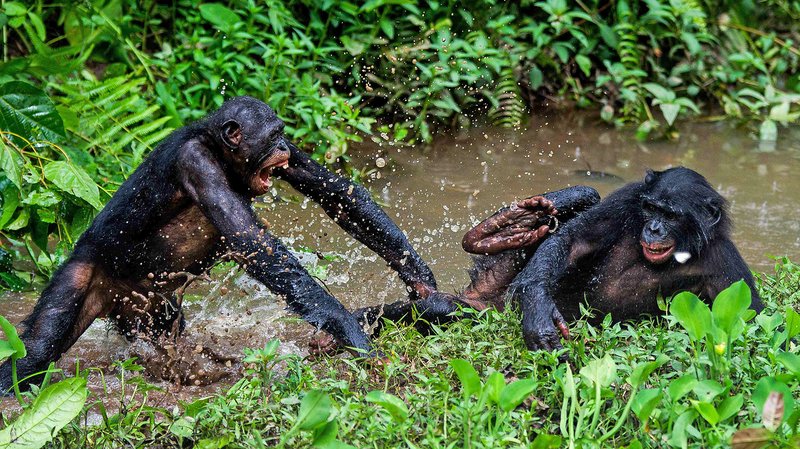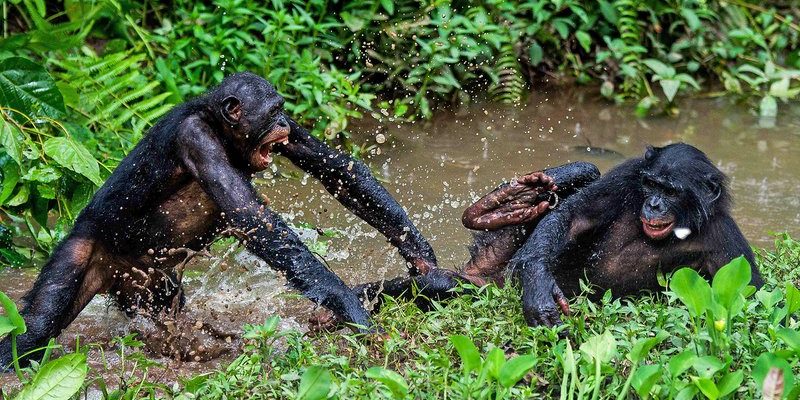
Bonobos are often compared to chimpanzees, and while both species share a significant amount of DNA with humans, they behave quite differently. Bonobos are known for their peaceful nature and strong social bonds—traits that might lead us to believe they pose no threat at all. However, like any wild animal, bonobos have instincts and behaviors that can become unpredictable, especially under stress or if they feel threatened. Let’s dive deeper into the world of bonobos and explore whether they really can be dangerous to humans.
Understanding Bonobo Behavior
Bonobos are fascinating creatures. They’re often referred to as the “peaceful primates” because of their highly social structures. They live in matriarchal groups, where females often play a leading role. Their interactions are characterized by a lot of hugging, kissing, and even sexual behaviors that help maintain harmony within the group. Think of them as the social butterflies of the primate world.
However, it’s essential to recognize that bonobos are still wild animals. Their natural instincts can come into play if they feel threatened. For instance, if a bonobo perceives a human as a threat—say, when someone gets too close or invades their territory—they may react defensively. This could include aggression, particularly if they believe their young are in danger. So, while they’re generally friendly, you can’t entirely dismiss their potential for erratic behavior.
Common Misconceptions About Bonobos
One of the biggest misconceptions surrounding bonobos is that they are completely harmless. Many people mistakenly believe that, because they’re non-aggressive by nature, they wouldn’t pose any threat to humans at all. While it’s true that bonobos prefer peace, this doesn’t mean they won’t clash with humans if provoked.
Let’s be realistic: wild animals operate on instinct. When their territory is encroached or they feel cornered, they can react aggressively. It’s essential to remember that even the sweetest-looking bonobo has the potential to defend itself. Just like you’d avoid a startled dog or a cornered cat, approaching a wild bonobo requires caution and respect for their space.
Bonobos in Captivity
When we encounter bonobos in zoos or sanctuaries, their demeanor can be quite different from those in the wild. In captivity, they’re often a bit more accustomed to human presence and may engage with visitors in playful ways. But don’t let their friendly antics fool you. They can still display aggressive behaviors, especially if they feel threatened or stressed.
For example, at a sanctuary, staff members often practice careful protocols to avoid disturbing the bonobos during feeding or breeding seasons. Just because they’ve been raised around humans doesn’t mean they won’t act instinctively to protect their space or family. If a bonobo feels a visitor is too close, it might react defensively. Understanding their behavior and respecting their boundaries is key to ensuring safety for both the bonobo and humans alike.
Can Bonobos Exhibit Aggression?
Absolutely. Although bonobos are generally known for their peaceful nature, they can exhibit aggressive behaviors. This is particularly true in situations involving dominance, competition for mates, or protecting their young. Picture a group of bonobos competing for food; feelings of stress and competition can heighten tensions and lead to aggressive encounters.
It’s crucial to recognize that aggression doesn’t necessarily mean they’re dangerous all the time. For instance, if one bonobo attempts to assert dominance over another, the aggression might be more of a display than a genuine threat to humans. But if a bonobo feels cornered or provoked, it can lead to real danger. Just like in human interactions, context matters significantly.
How Human Interactions Affect Bonobo Behavior
Human interactions can significantly impact how bonobos behave. When bonobos are frequently exposed to humans, especially in captivity, they may become more accustomed to our presence. However, this can sometimes lead to misunderstandings. For instance, a bonobo might approach a human out of curiosity but could misinterpret a sudden movement as a threat.
Moreover, when bonobos are kept in environments where they’re not allowed to express natural behaviors—like climbing or socializing fully—they can become stressed. Stress can lead to unpredictable reactions, further raising the risk of aggression. It’s essential for researchers and caretakers to foster an environment that allows bonobos to thrive and behave naturally, minimizing the chances of threatening behavior toward humans.
Protecting Yourself Around Bonobos
So, how can you ensure your safety around bonobos? If you ever find yourself in a situation where you’re observing bonobos, either in the wild or at a sanctuary, here are some tips to keep in mind:
- Respect Their Space: Always maintain a safe distance. Approaching too closely can be seen as a threat.
- Stay Calm: If you happen to encounter a bonobo, remain calm and avoid sudden movements.
- Observe Quietly: Enjoy watching their behavior without trying to interact directly.
- Follow Guidelines: In sanctuaries or zoos, always follow the instructions given by staff to ensure everyone’s safety.
Following these steps can help you have a safe and enjoyable experience without putting yourself—or the bonobos—at risk.
In summary, while bonobos are generally more peaceful than their chimpanzee cousins, they’re still wild animals with instincts that can make them unpredictable. Understanding their behavior and respecting their space is key to ensuring a harmonious interaction. Just like any relationship, whether with humans or animals, it’s built on respect and understanding.
So, the next time you see a bonobo, remember they’re not just cute and friendly; they’re complex creatures deserving of our respect. By treating them with care and caution, you can appreciate their unique nature without putting yourself in harm’s way. Whether you’re admiring them in the wild or at a sanctuary, embracing a mindset of respect will go a long way in bringing us closer to these incredible primates.

